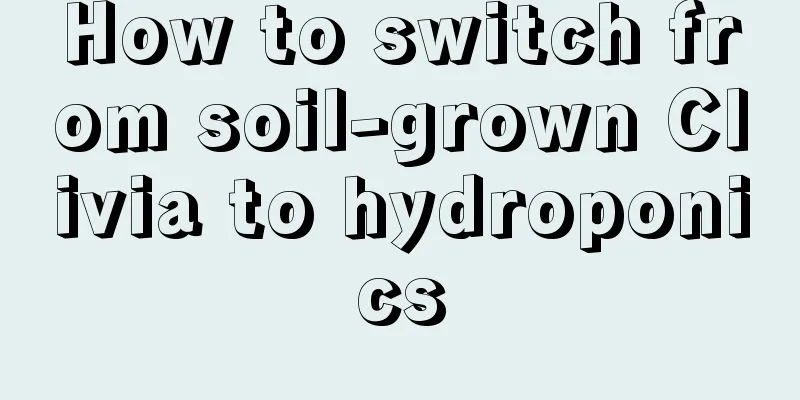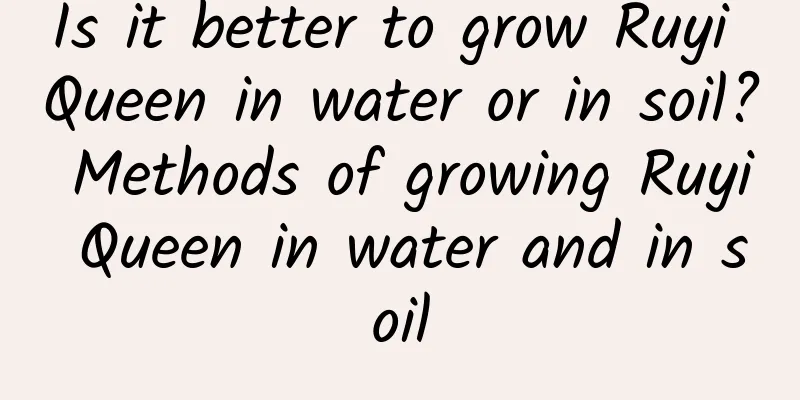How to switch from soil-grown Clivia to hydroponics

1. StepsThe first thing we need to do is wash the rotten roots, then disinfect them with potassium permanganate, air-dry them, and then cut the plants to the appropriate height and place them in a truncated mineral water bottle. The requirement is to let two-thirds of the plant appear outside the bottle, and then fill it with one or two centimeters of clean water. New roots will grow in about half a month. Before roots grow out, change the water once a week. If it has white teeth, you can change it once every fifteen days. When the roots of the plant grow to three to five centimeters, you can move it to the culture medium. To do hydroponics, you need to give it water when its roots grow one or two centimeters, and when it grows to five centimeters, replace it with nutrient solution. The advantage of the nutrient solution is that its leaves will grow vigorously and will not become deformed. 2. ContainerTo grow hydroponically, you must first choose the right container. It is best to use one made of transparent glass. If it is a seedling, you only need a glass canning jar. If the plants are larger and more numerous, you can use a hydroponic box or a goldfish tank. 3. Nutrient solutionIt requires two types of nutrient solution, one is organic and the other is inorganic. Both of them can be prepared by yourself. The former has richer ingredients, but the content is not high. The latter has fewer ingredients, but the fertilizer effect is relatively large. The two can be used in combination, so that they can complement each other's strengths and weaknesses. If used alone, the former is applied once every five days and the latter once a week. 4. WaterYou cannot use tap water directly. You need to expose the water to the sun for two or three days to allow the bleaching powder in it to settle. The sediment inside will change from strips to clumps, and the color should be green. When putting water in, it can cover the roots but not the pseudobulbs. If the water is too low, the plant itself will get very little water, but if it is too deep, it is likely to cause its roots to rot. If the water quality changes, and there is no oxygen or fertilizer, you need to change the water, otherwise the roots will turn black and yellow. |
>>: What to do if the roots of Rieger Begonia rot
Recommend
Sweet potato hydroponic culture tutorial is here, eating it is better than eating ginseng
Step 1: Pick sweet potatoes at the market Excludi...
Is corn cooling or hot? What are its effects and functions?
1. Cool or hot Nowadays people pay more attention...
Can potatoes be eaten if they sprout? Can potatoes be eaten if they turn green?
1. Can I eat it? Don’t eat potatoes at home after...
Yellowing leaves is not a big deal, it can be solved in 1 minute
Yellowing leaves of asparagus fern Main reason: t...
How often should I fertilize the lotus bowl and what fertilizer is better?
How often should I fertilize the lotus? During th...
How to repot roses
1. Remove from the basin For roses that need to b...
Keep it in a pot in the summer, it absorbs formaldehyde and improves feng shui, making your home immediately more oxygenated!
Plant a pot of Monstera at home to increase humid...
Fertilizing during the flowering period of Milan flowers
Fertilize Milan before flowering Before Milan flo...
The leaves are drooping and look lifeless? Cut once, put the branches in water, and the plant will come back to life
Many people may not know what Osmanthus fragrans ...
The Complete Book of Plant Poisons: You Must Know
1. Plants containing glycosides 1. Oleander: an e...
These "4 kinds" of flowers are poisonous, so it's best not to keep them at home, as they are not good for the elderly and children!
1. Dripping Water Guanyin The leaves of the weepi...
When is the best time to sow peacock grass?
Suitable time for sowing peacock grass Marigold i...
The qualities of plum blossoms and their symbolic meaning
1. Quality 1. Perseverance: As one of the three f...
What fertilizer is good for green radish
1. Nitrogen fertilizer The development of plant b...
Cultivation methods and precautions of Edelweiss
How to grow Edelweiss Cultivation Edelweiss grows...









